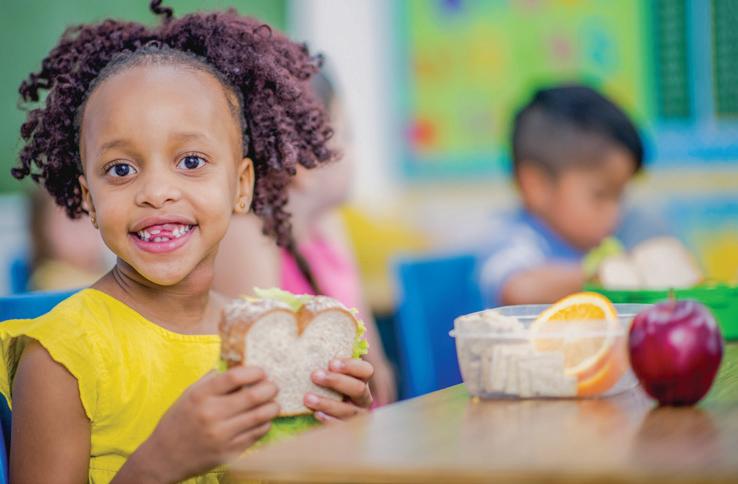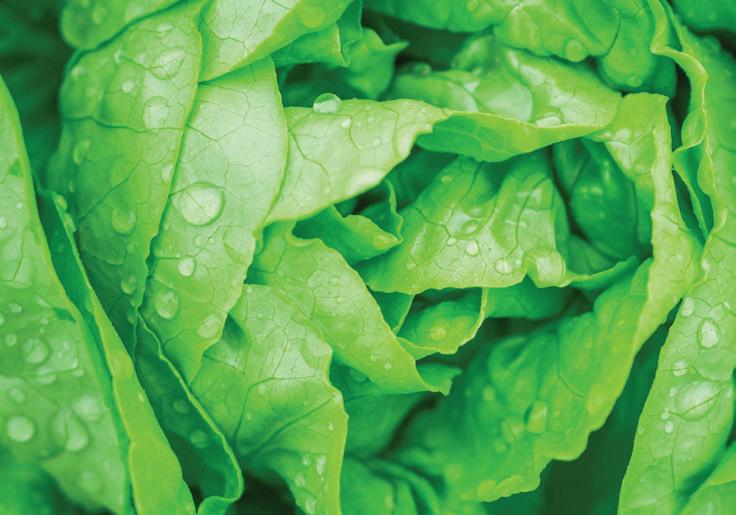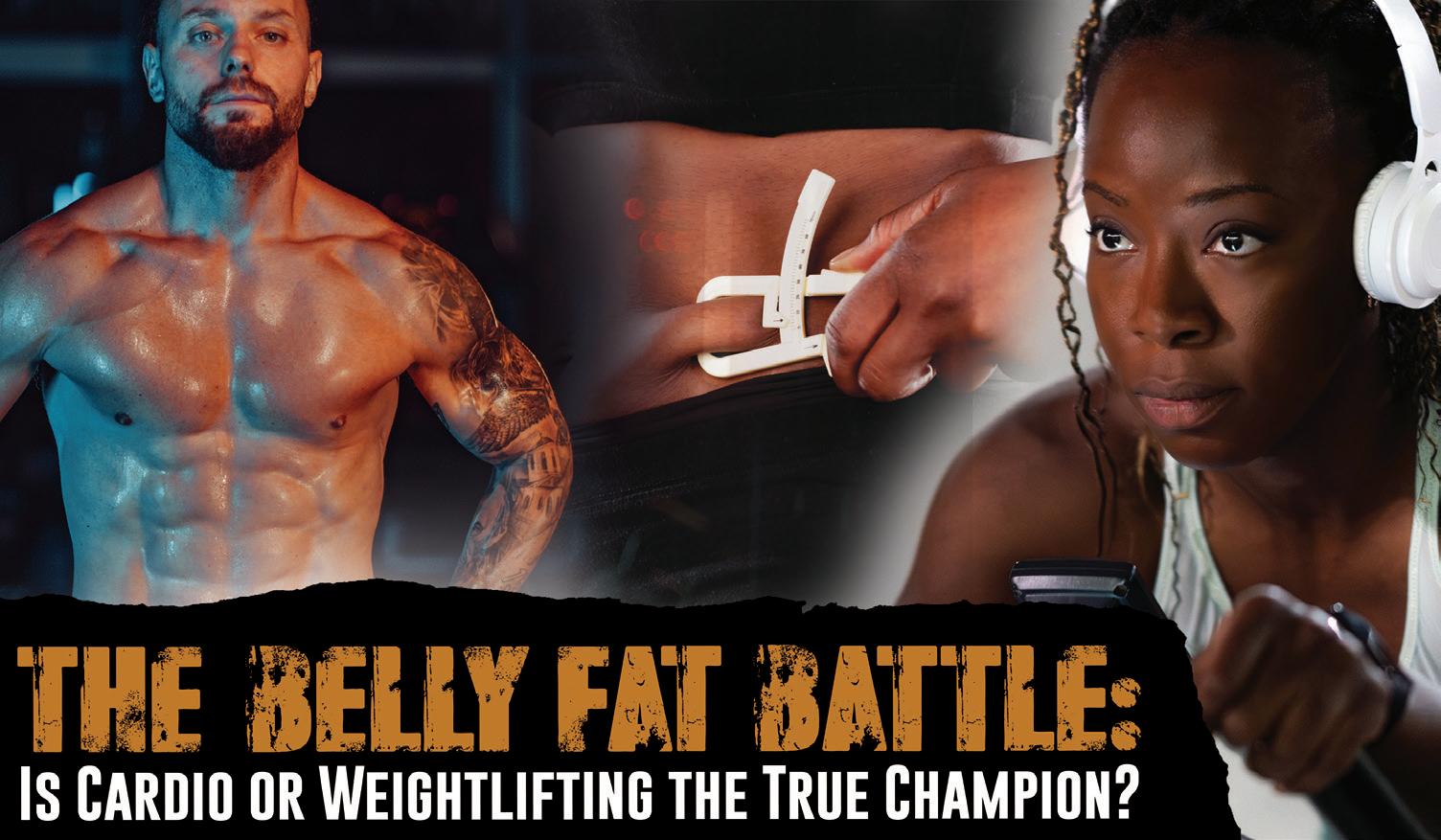










By d-mars.com News Provider
ood insecurity among children in the United States is a critical but often silent crisis that afflicts millions of young lives. In fact, 1 in 5 kids face hunger or food insecurity, according to the U.S. Department of Agriculture (USDA), and data from Feeding America shows more than 13 million children in the United States live in “food insecure” homes.
Among the factors fueling this epidemic of child hunger are rising food prices and economic instability, which continue to strain families across the country. Lack of nutritious food is also a major reason students miss school or struggle to stay engaged.
“Child hunger is more than a nutrition issue – it’s a quiet crisis that robs children of
hen most people think of eczema, they picture a dry, red, inflamed and itchy rash. But on darker skin tones, eczema can look very different, sometimes appearing purple, gray or dark brown. These differences can lead to a missed diagnosis and delayed treatment. This not only worsens the symptoms of this common skin condition, but it can also increase the chances of developing additional allergic conditions. Delaying treatment for eczema can take a toll on mental health as well, causing frustration, anxiety, stigma and emotional stress.
WHAT ARE THE UNIQUE SIGNS AND SYMPTOMS OF ECZEMA IN SKIN OF COLOR?
Eczema affects people of every race and ethnicity. However,
their ability to focus, learn and thrive in the classroom,” said GENYOUth CEO Ann Marie Krautheim, MA, RD, LD. “Every child deserves to be nourished, supported and ready to succeed, and the solution starts with a commitment to our nation’s schools.”
American adults agree, according to GENYOUth’s second annual “Youth Hunger & School Meals” survey. Nearly 9 in 10 (86%) believe going to school hungry severely hinders a child’s ability to focus in the classroom. Nearly all respondents (97%) recognize the broader impact of food insecurity on a student’s overall school experience, including low energy or fatigue (84%), difficulty concentrating (78%) and declining academic performance (62%).
What’s more, they connect food insecurity with a range of physical and emotional challenges, including frequent complaints like headaches and stomachaches (68%) as well as heightened levels of anxiety and stress, and lowered self-esteem.
School Meals are Critical to Learning
American adults overwhelmingly believe the solution to hunger in the classroom starts with access to healthy school meals. More than 9 in 10 agree students who eat breakfast regularly perform better in school while most recognize starting the day on a full stomach gives kids an academic edge including better attendance and classroom participation.
There is also strong support for making school breakfast a standard part of the school day, not an optional add-on. For nearly 7 in 10, this is a priority.
School meals, relied upon by 30 million students for a significant portion of their daily nutrition, according to the School Nutrition Association, provide the milk, whole grains, fruits, vegetables and lean protein students need to thrive.
Nutrition security emphasizes both quality and quantity in food intake, highlighting the critical importance of consistent access to healthy options. Innovative approaches like Grab and Go, Breakfast in the Classroom and Second Chance Breakfast have proven highly effective in expanding access to and participation in nutritious school meals.
“In our survey, it is encouraging to see that so many Americans recognize the link between school meals and student success,” Krautheim said. “To unlock every child’s ability to learn and succeed, we must uplift school meals with innovative solutions and rally support from parents and community leaders. Let’s work together to make sure every child is nourished and ready to thrive.”
Source: Family Features

research shows that people with skin of color are at higher risk of developing eczema and often experience more severe symptoms. Eczema on black and brown skin often doesn't appear as the typical red rash seen on lighter skin tones. Instead, it might look purplish, ashen gray or darker than the surrounding skin. As a result, many patients and healthcare providers may not identify the skin condition as eczema. They may diagnose it as something else or dismiss it as "just a rash." Without proper treatment, eczema can cause patches of lighter or darker skin in people with skin of color. It may also cause the skin to thicken over time. These visible changes can be especially distressing for people of color.
HOW DOES ECZEMA AFFECT MENTAL HEALTH IN PEOPLE WITH SKIN OF COLOR?
A study published in the May 2025 issue of Annals of Allergy, Asthma & Immunology found that adults with eczema are two to three times more likely to have depression and anxiety. For people of color, the emotional burden of living with eczema can be even greater. Barriers such as limited
access to affordable or make it harder for many to get effective treatment. These challenges can lead to worse mental health outcomes. A lack of representation in healthcare, historical and ongoing mistrust of care, and limited medical training on how eczema appears on darker skin tones all contribute to delayed eczema and mental health treatment.
How can I find support for mental health? Many resources are available. When you visit your healthcare provider ask for a referral to a mental health specialist. The EczemaInSkinofColor.org website is a comprehensive educational guide with advice on how to talk with your healthcare provider about stress, self-esteem, anxiety and depression related to your skin condition. You don't have to manage the physical and mental burden of eczema alone. To learn more about how eczema presents on skin of color and find more resources for care and support, visit EczemaInSkinofColor.org.
Source: BrandPoint Content


ABy d-mars.com
News Provider
s concerns about childhood obesity and chronic disease reach crisis levels, public health experts are urging Americans to eat more fresh produce.
For the first time in history, more children worldwide are obese than underweight – a reversal driven largely by diets dominated by ultra-processed foods and a shortage of fresh fruits and vegetables, according to UNICEF. It’s not just an issue impacting children. In the United States, adult obesity rates have hovered at approximately 40% from 2021-2023,
according to the Centers for Disease Control and Prevention.
Fresh produce in the United States has never been safer with extensive federal requirements for leafy greens. Farmers and produce companies have also taken food safety concerns seriously, investing heavily in prevention, testing and traceability systems. Many farmers and food companies voluntarily comply with industry-wide standards. For example, in California, the Leafy Greens Marketing Agreement (LGMA) sets measurable and verifiable standards for the produce industry, further enhancing food safety.
The numbers tell a compelling story about both safety and benefits. Americans consume 130 million servings of leafy greens every day, according to the Western Growers Association. Meanwhile, the evidence linking leafy green consumption to better health outcomes continues to mount.
Research published in the journal “Neurology” found eating approximately one serving per day of leafy greens was associated with slower cognitive decline – equivalent to being 11 years younger in age. A study by the “Institute for Functional Medicine” discovered diets rich in leafy greens sparked DNA changes that reversed biological aging by up to 3.23 years. The cardiovascular benefits extend beyond mortality reduction. A study published in the “European Journal of Nutrition” found consuming 1.5 cups of leafy greens daily could help prevent heart disease in older adults. As has long been documented in medical literature, consuming more fruits and vegetables is associated with lower mortality rates.
“This isn’t just about adding years to your life; it’s about maintaining quality of life and independence as we age. It’s also important to remember that,” said Dr. David Acheson, a medically trained food safety expert who previously served in leadership at both the FDA and USDA. Access to fresh produce has also never been more convenient or varied. From bagged salads and pre-cut vegetables to ready-to-eat fresh cut fruit bowls or vegetable trays, there are countless ways to incorporate healthy foods into diets. These options reduce barriers to healthy eating by eliminating prep time and providing portion-controlled servings that help minimize food waste while making nutritious choices more accessible. This means the real challenge is translating this abundance of fresh produce into better dietary habits and improved public health.
In a nation grappling with obesity, diabetes, heart disease and cognitive decline, doubling down on fresh produce isn’t just good advice. It’s a public health imperative.
Source: FamilyFeatures
By d-mars.com
Lung cancer can enter a person’s life like a tornado, creating chaos out of nowhere and leaving them feeling powerless. Nobody chooses to have lung cancer, but thanks to advances in research and treatment, some choices may lower the chances of lung cancer shortening life.


Five out of six lung cancer patients smoked tobacco at one time, and quitting at any age reduces your chances of lung cancer and other smoking-related diseases. There have never been better options to help people quit, including more effective nicotine replacements, medications to curb withdrawal symptoms, and counseling.
Other cancer-causing chemicals can make their way into the air, such as radon or smoke from cooking and wildfires. Test your home for radon and address levels if elevated. Use air filters and wear an appropriate mask to help decrease exposure until the air clears.
CHOICES THAT LEAD TO EARLIER DETECTION
Lung cancer screening can detect disease earlier when treatments tend to be easier on patients and more effective. For people who smoke tobacco or smoked in the past, a yearly CT scan can dramatically reduce a person’s chance of dying of lung cancer. Current or former smokers aged 50 or older should ask their primary care provider about lung cancer screening.
One in six lung cancers happens in someone who never smoked and can sometimes run in families. Currently, there are no screening recommendations for never smokers, but this is an area of intense research. People with an immediate family member, such as a parent or sibling who developed lung cancer as a never smoker, should ask their primary care providers about screening during their yearly check-up, as screening recommendations are likely in the next few years.
CHOOSING BETTER TREATMENT
It is important to include lung cancer experts on your care
team who know all the latest incredible breakthroughs in lung cancer. Experts not only will know the right tests, procedures and treatments to offer you, but will understand what parts of your treatment can be handled close to home and what parts may need to happen in a larger hospital that may have more resources in case something goes wrong. The American College of Surgeon’s Commission on Cancer is an organization that ensures hospitals follow the best practices and have the right people to deliver high-quality care to cancer patients. You can connect with a cancer team at an ACS Commission on Cancer accredited hospital.
CHOOSING A BETTER TOMORROW
Cancer research saves lives. In the past five years the survival rates of patients with advanced lung cancer have quadrupled because cancer research brought us new treatments. However, we have more work to do. In the U.S., more than 120,000 people lose their battle with lung cancer every year, so we must keep looking for a better way. You can help by supporting the people who support medical research - from contributing to research fundraising to advocating with policy makers. Research is our best chance at turning hope into miracles.
Source: BrandPoint Content


By Frenetta Tate News Provider
e live in a world that’s always pushing us to do more, get more, be more. Hustle culture runs deep, and while ambition is a beautiful thing, it can also be a trap. When success is the only scoreboard we watch, we lose sight of what truly keeps us grounded: gratefulness.
Gratefulness is about pausing long enough to recognize what’s real, what’s good, and what’s worth protecting. And in a society where resilience is often our default mode, practicing gratefulness isn’t just healthy — it’s a power move.
IT’S PART OF WHO WE ARE Gratitude shows up in the way we gather, support, and celebrate one another — through shared meals, meaningful conversations, and showing up for each other during life’s highs and lows. It’s intentional. It’s how we create space for reflection, connection, and perspective, even in the midst of chaos.
It’s showing up to clap the loudest for someone else’s win, even when you’re waiting on your own. These aren’t empty gestures — they’re quiet declarations of care, connection, and mutual respect. In a fast-moving world, taking time to truly be present with people is an act of gratitude. It says, “I see you. You matter.” Whether it's lending a listening ear, offering your time, or creating room for joy in the middle of stress — these moments are how gratitude becomes real. It's not about putting on a show for social media. It's about choosing to value people and presence, even when life is noisy, unpredictable, or demanding. Gratitude, at its core, is about intention — and in times of chaos, that intention becomes a stabilizing force.


Gratitude shifts mindset. Research consistently shows that people who regularly practice it tend to sleep better, stress less, and strengthen their relationships. But beyond the data, it’s about how we carry ourselves through difficulty.
Gratefulness doesn’t erase struggle — it coexists with it. It doesn’t cancel out grief, stress, or frustration. It simply reminds us that even in the middle of hardship, there is still something holding us up. Even if it’s just the fact that we made it through the day.
None of us gets through life alone. Behind every success is a web of support — mentors, colleagues, family, friends, or even strangers who extended a kindness when we needed it most. Gratitude reconnects us to that truth. It nudges us to reach out and say, “Thank you for being there.” And more importantly, it encourages us to return the favor — not out of obligation, but from a place of appreciation.
Acts of giving, supporting others, and lifting someone up are all extensions of a grateful mindset. When you truly recognize what you've been given — whether it's time, resources, wisdom, or simply the ability to keep going — it naturally creates a desire to pay it forward. Gratitude moves us from internal reflection to outward impact. It’s what turns appreciation into action.
That action might look like mentoring someone who's trying to find their way, sharing knowledge without keeping score, or helping a friend stay afloat when life gets overwhelming. It can be as simple as making space at the table, listening without judgment, or offering encouragement when someone’s confidence is shaken.
Gratitude fuels generosity — not just with money or material things, but with time, attention, and care. It says, “Because someone showed up for me, I’ll show up for someone else.” And in that cycle of giving, we reinforce the truth that we’re all connected. Gratitude that doesn’t just live in words but shows up in how we treat others — that’s where the real transformation happens.
Gratitude doesn’t have to be a grand gesture. It’s in the quiet moments — noticing the way sunlight hits your desk, enjoying a good laugh, finishing something you thought you couldn’t. It’s writing down three small wins at the end of the day. It’s taking a breath and reminding yourself that you’re still standing.
Gratefulness isn’t about ignoring the mess of life. It’s about not letting that mess erase what’s still good.


Some seasons are heavy. Maybe you’ve experienced loss. Maybe your mental health is on empty. Maybe the pressure is too much, and nothing feels “good enough” to be grateful for.
If that’s you, know this: you’re not alone, and you’re not failing.
Gratitude doesn’t require joy. It starts with awareness. It can be as small as noticing that you made it out of bed. A deep breath. A moment of quiet. A message from someone checking in. A cup of coffee that warmed your hands.
You don’t need to fake it or force it. Just recognize what’s present. Sometimes, just saying “I’m still here” is not only enough — it’s everything.
This time of year, often brings the same surface-level messages: be thankful, be positive, count your blessings. But this year, let’s go deeper.
There’s a lot happening in the world right now — tension, uncertainty, division. And while we can’t always fix what’s out there, we can check in with what’s happening inside ourselves.
What am I truly grateful for — and have I acknowledged it?
Who needs to hear “thank you” from me?
What lessons have I overlooked in my own journey?
Where can I shift from complaint to appreciation?
Because gratefulness is often quiet. It doesn’t shout. It doesn’t demand the spotlight. But make no mistake — it’s a power move. It grounds us when the world is spinning. It refocuses our energy from what’s missing to what matters. It strengthens relationships, sharpens perspective, and reminds us of our responsibility — to ourselves and to each other.
We’ve been taught to hustle, push, and chase. But gratitude is a different kind of strength — one that doesn’t drain but restores. One that doesn’t compete but connects.
So, as we close out this year, let’s stop treating gratefulness like an afterthought. Let’s see it for what it truly is: a mindset shift, a tool for growth, and a daily discipline that can shape how we live, lead, and relate. It’s not soft. It’s strategic. And it might just be the most powerful move we’ve been overlooking all along.
Frenetta Tate is a 5X Author, Certified Women’s Empowerment Coach, Entrepreneur Coach, Business Consultant and Thought leader on Leadership and Personal Development. Visit www.frenettatate.com


tress and parenting go hand in hand, but during the holiday season, many parents find their stress levels rising to new heights. Between coordinating schedules, shopping, traveling and managing children’s expectations – plus the disruption to the school routine that everyone had finally settled into – the season can feel more like mayhem than merry.
However, by thoughtfully planning and implementing a few practical strategies, parents can protect their well-being and support their families. Early childhood experts from The Goddard School share guidance to help parents stay grounded and make the most of their meaningful family moments this holiday season.
One of the most empowering steps is to decide in advance what truly matters to your family. Consider:
• Which traditions or gatherings are nonnegotiable?
• Are there holiday events you can skip this year without regret?
• What obligations are you taking on out of habit rather than genuine desire? By reducing the number of “must-do” activities, you can avoid overextending your family. It’s OK to decline invitations when your calendar is already full.
Holiday spending can weigh heavily on your mind. Create a family holiday budget that includes gifts and activities, then stick to it. Use the opportunity to teach your children about responsible spending and gratitude. Remember, the most meaningful gifts are often those made with time, attention or creativity, not the highest price tag.
Stress often arises when family dynamics, expectations or traditions clash. You can reduce this by setting boundaries and communicating them early. Speak openly with the relatives and friends you’ll see about what’s comfortable for your family and what isn’t (e.g., physical space, travel, topics to avoid). Let your children know what to expect, as the lack of routine during this time can be particularly challenging. Modeling clear boundaries helps your children learn to express their own needs, too.
Amid the hustle, your own basic care often slips, but your well-being is key to being present for others. Consider establishing routines, such as:
• Sleep: Aim for 7-8 hours per night whenever possible.
• Nutrition: Keep healthy staples in the mix, even if treats abound.
• Movement: A short walk, stretch breaks or gentle exercise may help reset your nervous system. Stepping outside can be especially helpful.
Also, if illness strikes, listen to your body and give yourself permission to pause. Pushing through tends to backfire.

Even the best-laid plans don’t prevent tension or unexpected emotional triggers. Anticipate stress by creating fallback strategies. For example, plan to use a playlist, a quick breathing exercise or a sensory object to help you regroup when your stress escalates. These strategies work for children as well.
If you’re worried about unwanted questions – such as a family member asking about politics or your plans to have another child – rehearse your response in advance with a friend. When these stressful moments arise, having a toolkit gives you a sense of control.
Use screens intentionally, such as video calling out-of-town family members, rather than passively scrolling. Focus on in-person connection by playing games, telling stories, making crafts or taking walks. Remember to lead by example, as your children are watching. Being fully present at key moments is the one gift your family will remember above all else.
As the holidays approach, the pressure to do it all can loom large. By clarifying priorities, setting boundaries and safeguarding your health, you can minimize stress and maximize joy. That said, even with careful planning, things can go off course, and that’s OK. Practice self-compassion and allow for imperfections. Enjoy every laugh, surprise and even the occasional moment of calm.
Source: FamilyFeatures (Edited by d-mars.com)

By
For decades, a central debate has raged in gyms and fitness forums: to shrink your waistline, should you head for the treadmill or the squat rack? When faced with this challenge, many people default to what seems logical: hours of cardio. But is that the most effective strategy? The science reveals a more nuanced answer. While both cardiovascular exercise and weightlifting play crucial roles, they attack belly fat in fundamentally different ways.
THE CASE FOR CARDIO: THE CALORIE-BURNING ENGINE
Cardiovascular exercise, or "cardio," is any aerobic activity that gets your heart rate up for a sustained period. Its primary benefit is straightforward and powerful: it burns a significant number of calories during the activity.
When you exercise, your body needs fuel. It first turns to readily available glycogen stored in your muscles and liver. Once that starts to run low (typically after about 20 minutes of moderate-intensity activity), it increasingly turns to your fat stores for energy. This is how cardio directly helps you achieve a caloric deficit. You simply cannot lose fat, from your belly or anywhere else, if you are not consuming fewer calories than you burn.
Research has been particularly kind to cardio in the fight against visceral fat. A comprehensive meta-analysis published in Obesity Reviews found that moderate-to-high-intensity aerobic exercise is highly effective at reducing both visceral and subcutaneous abdominal fat, even without a calorie-restricted diet.
The catch? The significant calorie burn from cardio largely stops when you step off the treadmill. While it's an incredibly effective tool for "in-the-moment" calorie burning, it doesn't fundamentally change your body's long-term metabolic engine in the same way its counterpart does.
This is where weightlifting, also known as resistance or strength training, enters the picture. While a 30-minute weightlifting session might burn fewer immediate calories than a 30-minute run, its true power lies in what happens after the workout.
Weightlifting is the single most effective way to build and maintain lean muscle mass. This is the secret weapon against belly fat for two critical reasons:
• A Higher Resting Metabolism: Muscle is metabolically active tissue. Unlike fat, which is largely inert storage, muscle tissue requires calories just to exist. Research estimates that a pound of muscle burns significantly more calories at rest than a pound of fat. As you build more muscle, you essentially upgrade your body’s engine, turning it into a 24/7 fat-burning furnace. This increased resting metabolic rate (RMR) means you burn more calories all day long, even while you sleep.
• The "Afterburn" Effect: Intense resistance training creates microscopic tears in your muscle fibers. Your body must then expend energy (i.e., burn calories) to repair and rebuild that muscle, making it stronger. This process is known as excess post-exercise oxygen consumption (EPOC), or the "afterburn." This metabolic boost can last for 24 to 48 hours after your workout, meaning a single weightlifting session is still burning extra calories long after you’ve left the gym.
Furthermore, when you lose weight through diet and cardio alone, you often lose muscle mass alongside fat. This can ironically slow your metabolism, making it harder to keep the weight off. Weightlifting sends a clear signal to your body: "We need this muscle!" This ensures that the weight you lose is overwhelmingly from your fat stores, helping you achieve a leaner, more defined physique.
VERDICT: "VS." IS THE WRONG QUESTION
So, which is better? The answer is clear: the debate itself is flawed. Asking whether cardio or weightlifting is better for belly fat is like asking if a hammer or a screwdriver is better for building a house. You need both tools.
The most effective and sustainable approach to eliminating belly fat is a synergistic combination of both.
• Cardio maximizes your calorie deficit during the workout and directly attacks visceral fat.
• Weightlifting builds the muscle that maximizes your calorie deficit at rest and ensures the weight you lose is fat, not muscle.
This combined approach attacks fat from two angles: it creates a significant, immediate calorie burn while simultaneously building a more metabolic body for long-term success.
For a practical takeaway, if you perform both in the same workout, most experts recommend lifting weights first. This allows you to use your full strength and energy for muscle-building when your glycogen stores are full, making your session more effective and reducing the risk of injury. Follow that with your cardio session to finish burning fat.
Ultimately, the best exercise routine is one you can stick with. But for the fastest, most effective, and most sustainable path to eliminating belly fat, the undisputed champion is not cardio or weightlifting. It's the powerful partnership between them.








By d-mars.com News Provider
WEXPLORE VIBRANT NATURE


hether planning for an idyllic romantic escape, a lively group getaway, or an adventurous family vacation, the Mexican Caribbean offers a variety of signature experiences, all enhanced by the region's stunning backdrop of crystal-clear waters, white sand beaches and lush jungles.
Nature takes center stage in the Mexican Caribbean, inviting travelers to immerse themselves in verdant landscapes and thriving ecosystems.
Holbox is a tranquil sanctuary where visitors can witness the magical glow of bio luminescence at night or marvel at whale sharks during the day. Entirely car-free, this serene island offers a peaceful escape in nature. A short drive from Cancún in the lush jungles of Puerto Morelos, visitors can dive into the mystical natural limestone pools called cenotes, or zip through vibrant jungle canopies. Further south, Bacalar enchants visitors with its "Lagoon of Seven Colors," ideal for enjoying a variety of water sports including sailing, kayaking, paddle boarding and snorkeling.
These nature-filled escapes promise unforgettable moments surrounded by the region's most breathtaking scenery.
DISCOVER CULTURAL TREASURES
Travelers eager to learn more about the Mexican Caribbean's rich Mayan heritage will find meaningful experiences that reveal details about the region's traditions and history.
In Chetumal, visit the Museum of Maya Culture or explore nearby archaeological sites that provide fascinating windows into centuries of civilization carved into the landscape. Further inland, Maya Ka'an gives visitors a rare opportunity to interact with local communities to learn firsthand about their ancestral traditions, artisanal skills and the stories that have been passed down through generations.
These destinations offer travelers deeper connection to the region's distinctive roots, making every visit an enriching experience.
For those captivated by the sea, the Mexican Caribbean offers a wealth of exhilarating aquatic experiences, letting travelers enjoy everything from underwater exploration to coastal charm.


One of Mexico's largest islands, Cozumel, invites guests to snorkel or dive at Palancar Reef, part of the Mesoamerican Barrier Reef System. Its crystal-clear waters and flourishing marine life make it a top destination for undersea adventures. Off the coast of Cancún, Isla Mujeres provides a laid-back retreat with stunning seascapes. Visitors can have a one-of-a-kind snorkeling experience at MUSA, the Underwater Museum of Art, where submerged sculptures promote reef conservation while creating a surreal marine gallery. Further south, Mahahual invites guests to stroll along its relaxed beachfront boardwalk, followed by a visit to Banco Chinchorro, Mexico's largest coral atoll and a UNESCO Biosphere Reserve.
The Mexican Caribbean invites travelers to explore vibrant marine ecosystems, embark on thrilling underwater adventures, or enjoy peaceful moments by the shore.
Many of the Mexican Caribbean's destinations blend luxury, nature and ancient healing traditions in a calm atmosphere unlike any other location.
In Costa Mujeres, guests are enveloped in an atmosphere of refined relaxation, where indulgence takes the form of rejuvenating spa rituals at luxurious resorts and massages are set against the serene backdrop of the region's pristine coastline. Meanwhile, Tulum beckons with its harmonious blend of ancient Mayan heritage and contemporary boho-chic allure. Couples and groups alike can unwind through restorative beachfront yoga sessions or partake in traditional temazcal ceremonies, surrounded by lush jungles that echo the spirit of wellness and cultural reverence.
With its seamless fusion of natural beauty and time-honored wellness practices, the Mexican Caribbean stands as an unrivaled destination for renewal where every moment is an invitation to restore energy and foster inner connection.
Couples in search of an unforgettable romantic retreat will find the Mexican Caribbean rich with enchanting locales, where romance flourishes amid breathtaking tropical beauty.
Cancún stands as the quintessential destination for couples, where leisurely strolls along white-sand beaches are complemented by sunset cocktails. As twilight descends, the city transforms into a haven for romance, inviting couples to indulge in exquisite beachfront dining or dance beneath the stars at vibrant, world-class venues. Just a short journey down the coast, Playa del Carmen captivates with its iconic Fifth Avenue, a lively area brimming with local artistry, boutique shopping and intimate restaurants.
For those seeking special places to reconnect, celebrate love or simply revel in each other's company, these extraordinary tropical destinations promise to kindle romance and create lasting memories.
The Mexican Caribbean offers endless possibilities for crafting a dream vacation, from sunsoaked beaches to vibrant cultural experiences. Visit MexicanCaribbean.travel to plan your perfect trip.
Source: BrandPoint Content